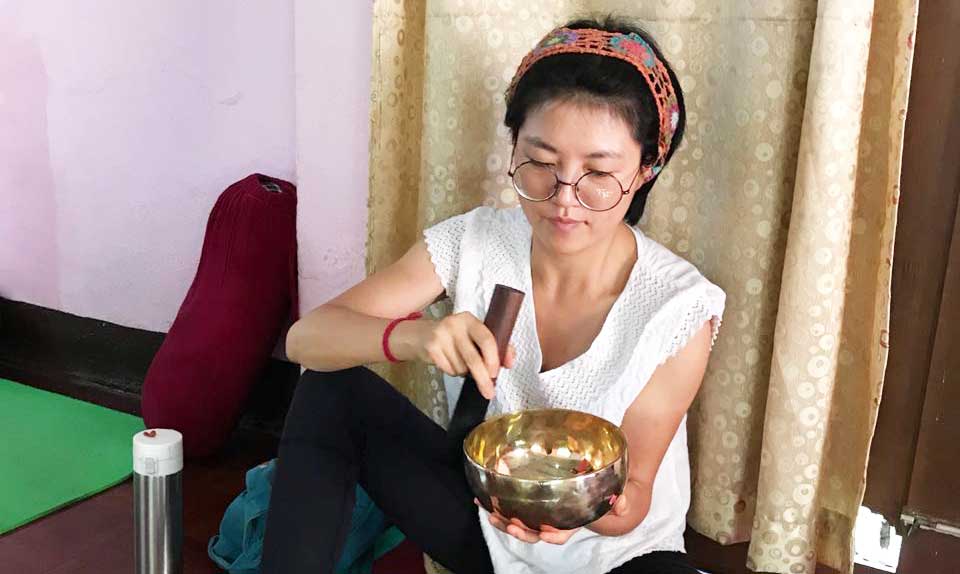History of Singing Bowls (Dwani Patro)
29 Jan 2020 HYN Himalayan Yoga Academy

History of Singing Bowls (Dwani Patro)
Most original singing bowls come from ancient hindus cultures in Nepal, and later promoted to Buddhist areas such as Tibet and India as well. As hindus cultures, they used to put the foods in different pots typically called Dabakaa, Batukaa, Kachauraa, Baataa, etc. Gradually they started to make different sound by playing this instruments. When it produced sounds and felt as singing, then people used to call it Singing Bowl.
Much of the history of singing bowls remains unknown or unclear due to the Chinese invasion of Tibet in the 1950s. However, oral traditions date singing bowls to the time of the historical Buddha Shayamuni (560 – 480 BCE). Some singing bowls during this time were used for strictly religious purposes within monasteries and temples, such as leading chants or prayers, guiding meditation, or acting as an offering or begging bowl.
Other times, larger bowls were used for grain storage and smaller bowls used to eat from. As the use of singing bowls spread throughout Asia to places like Japan, Korea, China, and Mongolia, their uses expanded as well. For example, Japanese and Vietnamese Buddhists have traditionally used singing bowls to perform funeral rites and to worship their ancestors.
Singing Bowls Today
For hundreds of years, however, what has remained constant is the calming, meditative state singing bowls can create. Singing bowls are useful to Buddhist practitioners and anyone else who is wanting to experience a greater amount of peace and intuition in their daily lives through meditation.Today, singing bowls are found far outside the temples and monasteries of the Himalayan mountains. They are used as tools for meditation or alternative treatment for various illnesses like chronic pain or depression, just to name a few!
Frequently, singing bowls are associated with sound therapy and sound baths or massages. For human beings, sound is a vehicle which can help us arrive to a healthier state of being, both physically and mentally. It also allows us to explore and express the feelings we keep inside of us. For this reason, singing bowls are becoming increasingly popular to treat anxiety disorders, depression, and even post-traumatic stress disorder. The vibrations work throughout our bodies massaging, cleansing, and purifying, while the calm meditative state allows individuals to search within and find what ails them.
When researching the benefits of using a singing bowl, you are likely to find it linked with cancer treatment. While the use of singing bowls is not a scientifically-backed treatment for diseases such as cancer, they have been noted to greatly improve the symptoms of the illness and treatment for cancer patients who have used Tibetan singing bowls as a part of their healing process. In a case such as this, singing bowls are not intended to heal the body of the cancerous cells but rather provide relief and balance to other parts of the mind and body. Using a singing bowl in this way is similar to drinking fluids and resting when sick—it does not cure you of your sickness, but it alleviates the symptoms and helps your recovery along the way.
